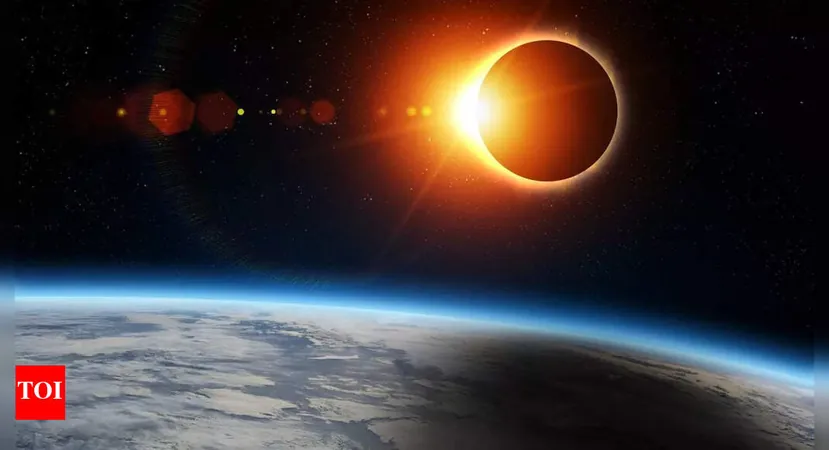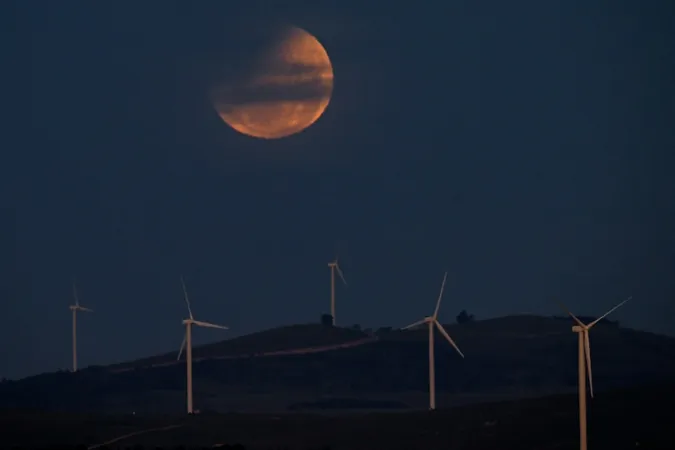
Witness the Incredible: How the Concorde 001 Captured the Longest Solar Eclipse in History!
2025-09-01
Author: Siti
A Historic Milestone in Astronomy
In 1973, something extraordinary happened: aboard the Concorde 001, a team of visionary scientists observed a mind-blowing 74-minute total solar eclipse—the longest on record! Taking to the skies at supersonic speeds, they intricately timed their flight with the Moon's shadow, pushing the boundaries of what was thought possible in astronomical research.
The Day the Sky Turned Dark: June 30, 1973
On that remarkable day over the sprawling Sahara Desert, the Concorde 001 transformed into a high-altitude flying observatory, decked out with specialized observation ports and scientific instruments. This groundbreaking technique allowed the team to extend the duration of total eclipse, achieving a feat that ground-based observers could only dream of. They would not only gather unique insights into the solar corona but also change the course of eclipse research forever!
The Science Behind Total Solar Eclipses
Total solar eclipses create a fleeting moment of darkness as the Moon completely obscures the Sun, but did you know that the maximum duration of totality on the ground typically lasts just about 7 minutes? In 1973, scientists saw a golden opportunity to exceed this limit by chasing the Moon's shadow at incredible speeds. By using the Concorde's supersonic capabilities, they effectively stretched the experience of totality like never before.
Concorde 001: A Marvel of Engineering
Equipped to fly at Mach 2.05, or over 2,500 km/h, the Concorde 001 was no ordinary jet. It was engineered to reach impressive altitudes, soaring above 16,000 meters to avoid the turbulence of the atmosphere. With precision flying and a carefully mapped trajectory aligned with the Moon's shadow, the aircraft managed to remain within the umbra—resulting in a breathtaking 74 minutes of continuous eclipse!
The Precision Mission: Timing was Everything
Success hinged on flawless execution; even a minor delay could have cost them valuable minutes of totality. The scientists concentrated on crucial moments known as second and third contacts—marking the start and end of totality. By matching the shadow's speed, the Concorde’s crew ensured a longer viewing period than anyone could achieve from the ground.
Exploring the Enigmatic Solar Corona
The solar corona, the outer layer of the Sun's atmosphere, is both breathtaking and mysterious, yet it’s only visible during total eclipses. During these 74 minutes, multiple research teams seized the opportunity to study its features, gathering data and high-resolution images that would significantly advance our understanding of solar physics. Physicist Donald Liebenberg, part of the mission, called it an "unforgettable experience," asserting that the Concorde's flight revolutionized how we observe solar events.
Legacy and Impact: Shaping Modern Astronomy
The legacy of the 1973 Concorde mission echoes in today’s astronomical pursuits. NASA currently utilizes WB-57 aircraft for high-altitude eclipse observations, while the European Space Agency's Proba-3 mission aims to mimic eclipses via satellite coordination. This pioneering flight seamlessly transitioned us from traditional observational methods to advancements in satellite and digital technology, revealing the immense potential of airborne studies in understanding our cosmos.
Inspiration for Future Generations
By perfectly synchronizing with the Moon's shadow, the Concorde 001 gave humanity an unparalleled view of the longest total solar eclipse ever documented. Those 74 minutes of darkness at supersonic speeds unlocked valuable insights into solar phenomena, igniting the passions of future astronomers and engineers alike. This wasn't just a flight; it was a leap into the future of space observation!



 Brasil (PT)
Brasil (PT)
 Canada (EN)
Canada (EN)
 Chile (ES)
Chile (ES)
 Česko (CS)
Česko (CS)
 대한민국 (KO)
대한민국 (KO)
 España (ES)
España (ES)
 France (FR)
France (FR)
 Hong Kong (EN)
Hong Kong (EN)
 Italia (IT)
Italia (IT)
 日本 (JA)
日本 (JA)
 Magyarország (HU)
Magyarország (HU)
 Norge (NO)
Norge (NO)
 Polska (PL)
Polska (PL)
 Schweiz (DE)
Schweiz (DE)
 Singapore (EN)
Singapore (EN)
 Sverige (SV)
Sverige (SV)
 Suomi (FI)
Suomi (FI)
 Türkiye (TR)
Türkiye (TR)
 الإمارات العربية المتحدة (AR)
الإمارات العربية المتحدة (AR)